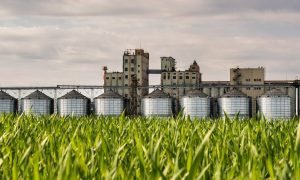Biofuels: Short-term goals versus long-term sustainability

The Indian government announced a ban on the use of “sugarcane juice and sugar syrup” for ethanol production in the 2023-24 supply year in order to maintain adequate sugar availability for domestic consumption and to keep prices under check. It may be recalled that India has set an ambitious goal of covering the entire country by 20 per cent ethanol-blended petrol by 2025. Presently it is around 11 per cent. Instead, it has been reported that now the government would encourage greater procurement of maize from the farmers at its Minimum Support Price (MSP). A few months ago, Food Corporation of India (FCI) had suspended supplies of excess rice to distilleries for ethanol production, to ensure adequate rice availability and reduce food prices for domestic consumers. Under its Ethanol Blending Policy’ in 2021, the Government hadallowed production of ethanol from B-Heavy Molasses, sugarcane juice, sugar syrup and sugar; encouraging sugar mills to divert excess sugarcane to ethanol’. Government had further declared at that time that “rice available with FCI would continue to be made available to distilleries in coming years. The extra consumption of surplus food grains would ultimately benefit the farmers as they will get better price for their produce” [1]. In 2021-22, FCI sold 1.02 MT of rice for the production of ethanol. The country, however, has been facing climate change-induced erratic monsoon and extreme heat wave conditions lately affecting its major crop seasons, Rabi and Kharif because of which it is forced to juggle the priorities between food and fuel.
But this newfound attention on maize for ethanol production instead of sugarcane and rice (supposedly spoilt rice in country’s long-term storages) is bit surprising and begs the question: why was maize not considered as the principal feedstock for ethanol right from the beginning, given the central role rice and sugar play in country’s food basket? Moreover, encouraging maize – instead of rice – for ethanol would have positively impacted perennial problems of heavy groundwater withdrawals and the concomitant energy requirements. Reportedly, water requirements per hectare under flood irrigation method, for both, rice and sugarcane are 4 times as that of maize. Way back in 2013, Ashok Gulati, then chairman, Commission for Agricultural Costs and Prices (CACP), which advises government on fixing minimum support prices for crops, had said that “rice cultivation should immediately shift to eastern states like Bihar and eastern Uttar Pradesh where water is available in plenty…Punjab should start growing maize for which it was once known for. While paddy cultivation needs 25 rounds of irrigation, maize requires only 5 rounds, which can conserve groundwater…..Paddy needs more water, fertiliser and power.” [2]. Even very recently, Dr. Gulati has advocated incentivizing private sector to set up ethanol plants based on maize. Indeed, `Pani Bachao, Paisa Kamao (PBPK)’ pilot scheme launched by the Punjab government in 2018 viewed shifting its farmers from paddy cultivation to maize as one of the drivers of groundwater conservation. Later on, TERI and Punjab Agriculture University, working on the World Bank-supported pilot in three districts of Punjab caried out wide consultation with the farmers on the subject. Not surprisingly, it was not as if the local farmers were not aware of the risks associated with ever-decreasing groundwater levels but for them the short-term economics was the key. While the paddy had a system of assured procurement by the state at MSP, there was no such assurance for maize although it too had MSP. Thus, as opposed to rice that was insulated from the market conditions, the prevailing market forces dictated procurement prices of maize that was usually well below its MSP given a lack of demand. In short, this basic economics ensured the primacy of rice cultivation in Punjab. But as being contemplated now, assured procurement of maize at MSP in conjunction with higher and sustainable demand on account of ethanol blending could very well be the catalyst addressing three major challenges in water-deficit states like Punjab: water, electricity, and farmers’ incomes while obviating the food versus fuel conflict.
It is evident, therefore, that the preferred biofuel feedstock options must not only not exacerbate food versus fuel conflict; they also do not consume excessive irrigation water, more so if the source happens to be groundwater. Essentially, biofuels have to be energy as well as water-efficient to ensure overall sustainability. Already some recent analyses have highlighted a looming water crisis for country’s hydrogen energy sector. According to a report by the International Renewable Energy Agency (IRENA) and Bluerisk titled ‘Water for Hydrogen Production,’ “99% of India’s existing and planned green and blue hydrogen capacities face extreme water stress conditions by 2040.” [3]. Even the short-term decarbonization and/or energy security goals have to be predicated on their long-term implications and their ecological footprints or else even prima facie benign actions to mitigate GHG emissions could end up in generating other crises, e.g., the water crisis.
While the efforts to maximize ethanol blending in petrol are appreciable, for long-term sustainability it is critical that more concerted R&D efforts are mounted on Advanced bio-fuels’ rather than moving from one food crop to other depending on weather variability based domestic food security concerns. Even the caveat that permits use of surplus or rotten rice from FCI godowns is not desirable in this context. Afterall, ourNational Policy on Biofuels’ emphasizes (a) setting up Second Generation (2G) bio refineries and (b) development of new feedstock for biofuels, and (c) Advanced biofuels through use of lignocellulosic feedstocks and non-food energy crop [4]. If India can scale such heights in space research, there is no reason for her to stuck with the old-generation ethanol feedstocks jeopardizing food security on one hand and risking impeding water crisis on the other.















